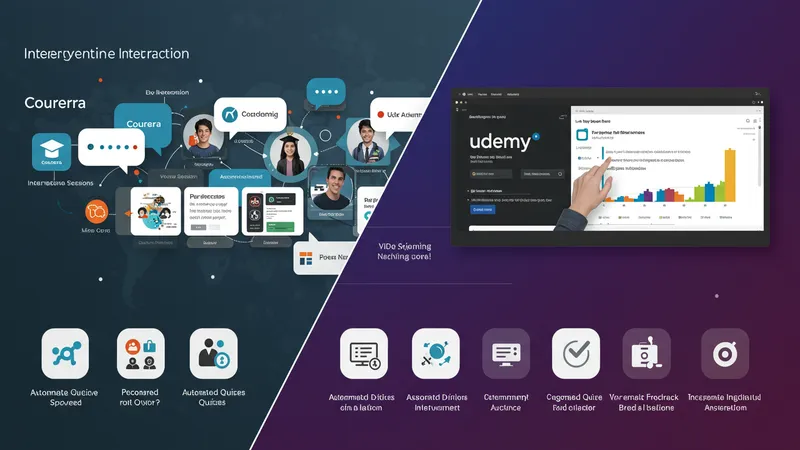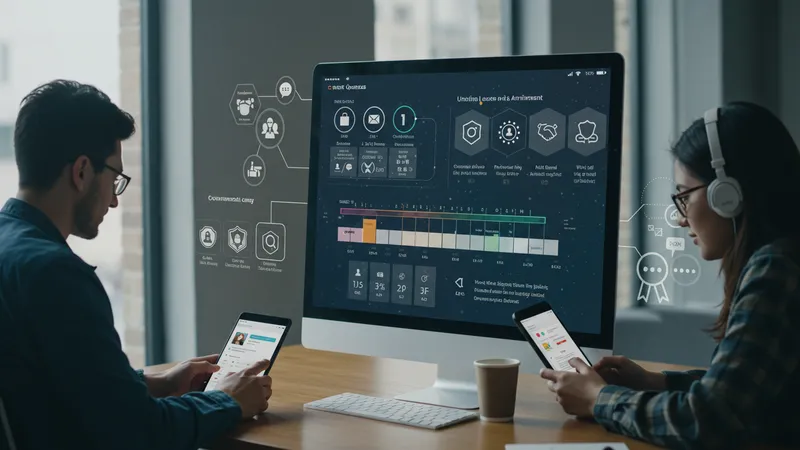

Digital learning has dramatically transformed how people approach education in the 21st century. No longer limited by location or classroom schedules, learners can now access customized educational experiences online, designed to fit around their personal and professional lives. At its core, flexible online learning allows students to navigate their studies at their own pace and often on their own terms, opening doors to international programs and specialized instruction without relocating or pausing their careers.
This model of education leverages interactive technology, multimedia resources, and collaborative platforms. With a broad spectrum of subjects from business to the arts, learners have more control over what, how, and when they study. This flexibility adapts to the needs of busy professionals, parents, or those living in remote areas, and allows institutions to reach new cohorts of students from around the globe.

The popularity of flexible online learning can be attributed to its unique ability to blend convenience with high-quality content. Unlike traditional education, which often requires physical presence at set times, learners can now log in from anywhere, fitting lectures and assignments into their unique schedules. This accessibility is especially appealing to those balancing multiple commitments.
Furthermore, the courses and degrees available online are expanding rapidly. On platforms like Coursera and edX, partnerships with reputable universities mean that students can earn certificates from internationally recognized institutions without ever setting foot on campus. These authoritative credentials allow for career advancement and broaden employment horizons.
Comparing platforms such as Udemy, Coursera, and edX reveals significant differences in course structure, instructional methods, and pricing. Coursera and edX generally emphasize accredited, university-designed programs suited for academic progression, whereas Udemy specializes in practical, skill-based tutorials provided by industry experts. This means each learner can choose a platform that aligns closely with their learning objectives and budget constraints.
The evolution of technology has also enriched the online learning environment, with interactive forums, virtual classrooms, and adaptive learning paths. These features have improved student engagement, made assessments more relevant, and often provided immediate feedback. As the tools and platforms mature, so too does the breadth and depth of the subjects on offer, revealing layers of potential for individuals eager to upskill or change careers. The deeper details reveal even more valuable insights ahead...
One of the central advantages of modern online education is its adaptability. Unlike conventional educational pathways that mandate a rigid schedule, digital platforms let students learn at their preferred times. For busy professionals and caregivers, this flexibility provides a pathway to achieve academic credentials without sacrificing current responsibilities. Institutions themselves benefit, expanding their reach and attracting diverse student populations worldwide.

Flexible learning also typically lowers costs. Students save on commuting, accommodation, and many materials available digitally. Additionally, tuition can be more affordable than traditional degrees, as demonstrated by free or budget-friendly courses on platforms like Udemy and introductory programs on edX. These cost efficiencies help to democratize learning, making quality education accessible to a wider audience.
The asynchronous nature of platforms like Coursera and edX means learners collaborate and share knowledge across different time zones, often introducing varied perspectives into the classroom experience. This diversity enhances discussions and deepens critical thinking. Group projects and forums allow for interactive engagement that mirrors, and sometimes surpasses, traditional classroom dynamics.
Technological advancements in edtech have enabled highly personalized learning paths. Many online courses adapt in real-time to the learner’s progress and performance, ensuring that each individual moves at an optimal pace. This strategy boosts motivation and helps students retain content more effectively, paving the way for lifelong learning and skills mastery in today’s rapidly changing environment.
Online learning platforms differ in their instructional frameworks. For example, Coursera frequently offers a combination of pre-recorded lectures and live sessions, augmenting traditional lectures with peer-reviewed assignments and interactive quizzes. Meanwhile, Udemy appeals to self-motivated learners with its fully self-paced video modules, allowing users to pause, rewind, and accelerate their studies as needed.

Assessment in online education is equally diverse. Many platforms deploy automated quizzes, real-time grading, and community feedback. Platforms like edX often include practical projects or proctored exams to validate comprehension, adding weight to the certifications. Learners benefit from immediate progress tracking, motivating consistent engagement and deeper understanding.
Collaboration tools further differentiate these platforms. Coursera and edX frequently include discussion forums, peer-grading systems, and group projects. This emphasis on community learning fosters networking and helps students clarify concepts by teaching others, emulating real-world teamwork environments. In contrast, Udemy's focus is on individual skill acquisition rather than collaborative assignments.
Such diverse structures allow online learners to tailor their educational experiences. Some may seek accredited certificates from leading universities, while others focus on rapidly acquiring new skills or exploring personal interests. The freedom to choose the optimal mix of structure and flexibility underpins the appeal of modern digital learning platforms.
Technology lies at the heart of successful online education experiences. Platforms such as Coursera and edX employ interactive dashboards, AI-driven tutor assistance, and mobile-friendly interfaces, ensuring students can access their courses seamlessly across devices. Engaging features like gamified quizzes, achievement badges, and adaptive timelines elevate motivation, particularly for self-directed learners.

Student support is a crucial differentiator among platforms. Coursera and edX typically provide access to teaching assistants, live chat help, and extensive resource libraries. Udemy, while more course-author driven, includes question-and-answer boards where students communicate directly with instructors. These systems enhance the sense of inclusion and help address learning gaps quickly, even with physical distance between students and faculty.
The rise of synchronous virtual classrooms—real-time webinars or group discussions—is another important development. These experiences replicate traditional classroom dynamics while offering flexibility. Participation in live sessions can boost accountability and foster deeper community connections. For those who prefer self-paced study, asynchronous content is still available to ensure that everyone finds a rhythm that suits them.
Engagement analytics, now standard on major platforms, help students monitor their progress. Visual dashboards track quiz scores, assignment submissions, and forum contributions. Personalized feedback and automated reminders further reinforce learning, providing encouragement and targeted support at every stage.
The future of flexible online education looks remarkably promising. As more universities form partnerships with platforms like Coursera and edX, the range and quality of online degrees will keep expanding. These collaborations are likely to create specialized programs tailored to emerging industries, ensuring learners remain relevant in a rapidly evolving job market.

Micro-credentials and stackable certificates represent a growing trend. Both platforms as well as Udemy are introducing modular courses where learners can assemble their own learning journeys. This allows users to accumulate skills and qualifications directly aligned with personal or professional aspirations, rather than being bound by traditional degree structures.
Online learning is also poised to become even more interactive. With advances in virtual and augmented reality, some courses now offer simulations, immersive labs, and real-time collaboration tools. This hands-on experience bridges the gap between theory and practice, creating an even richer and more dynamic environment for skill-building.
Ultimately, the appeal of flexible digital learning is its adaptability. As technology, industry requirements, and learner needs evolve, platforms like Coursera, edX, and Udemy will continue to shape a future where high-quality education is accessible to anyone, anywhere, at any stage of life.